The Ittinger Museum is located inside the Kartause Ittingen, a former Carthusian monastery near Warth-Weiningen. The museum was founded by the curator of the Thurgau Historical Museum, Dr. Margrit Früh, in 1983. Its most important "exhibit" is the building itself, including the church, the monk cells or the refectory.
The history of the monastery in Ittingen goes back to the foundation of an Augustinian monastery in 1150. It was bought by the Carthusians in 1461 and then underwent major transformations.
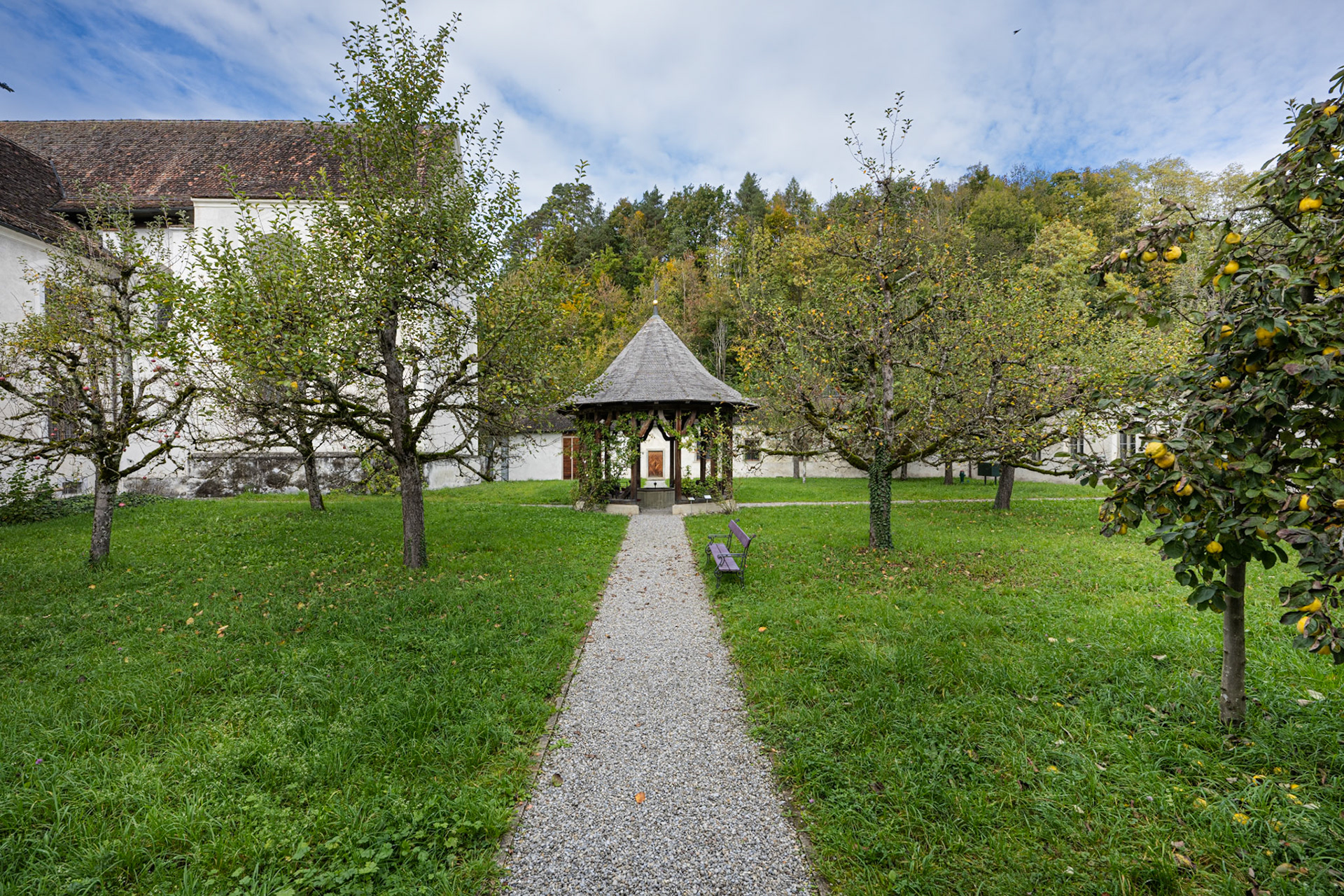
Kartause Ittingen - garden
The church portal dates from 1550.
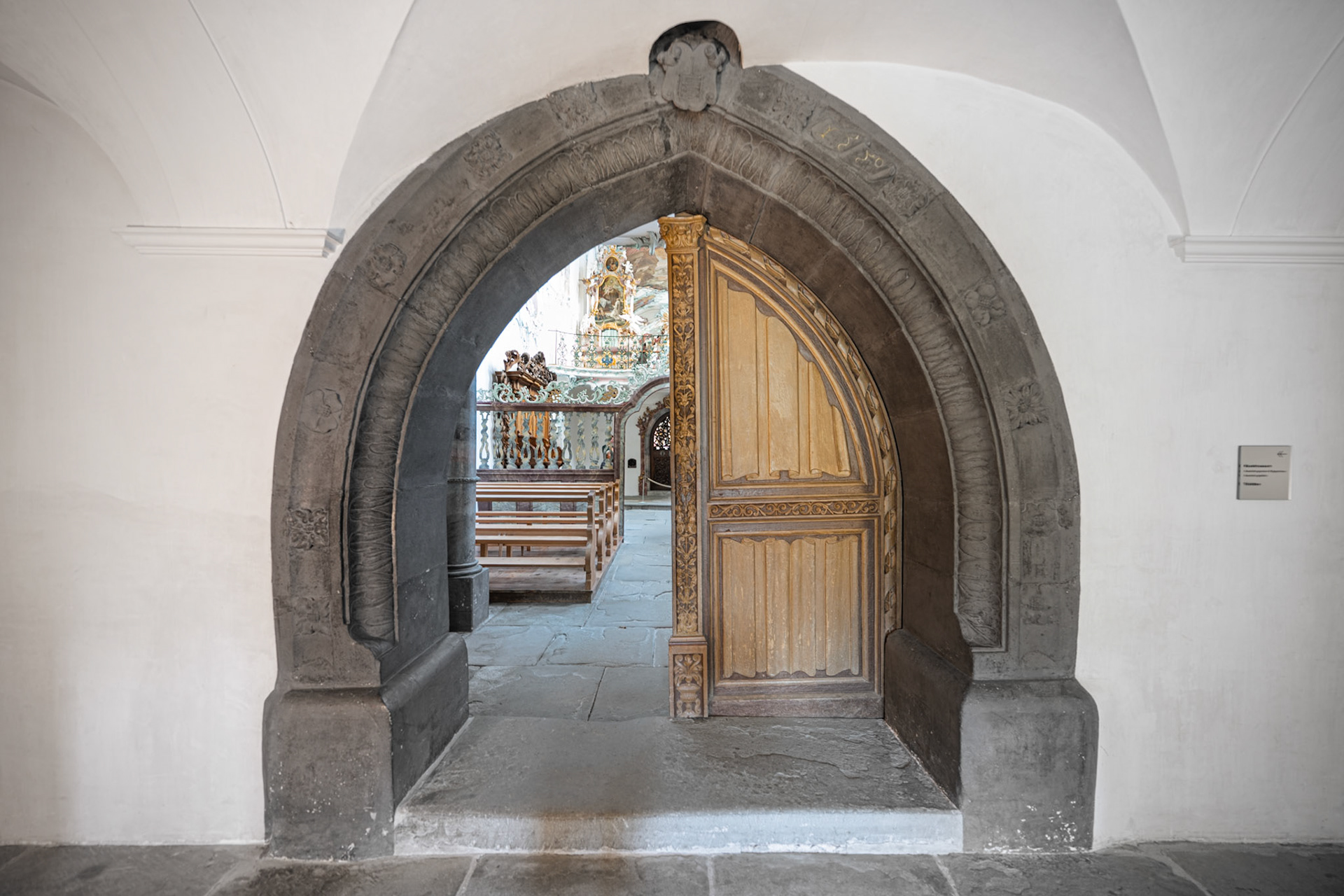
Kartause Ittingen - church entrance
The baroque choir stalls were carved in walnut wood by Chrisostomus Fröhli from Bichelsee in Thurgau and completed in 1701.
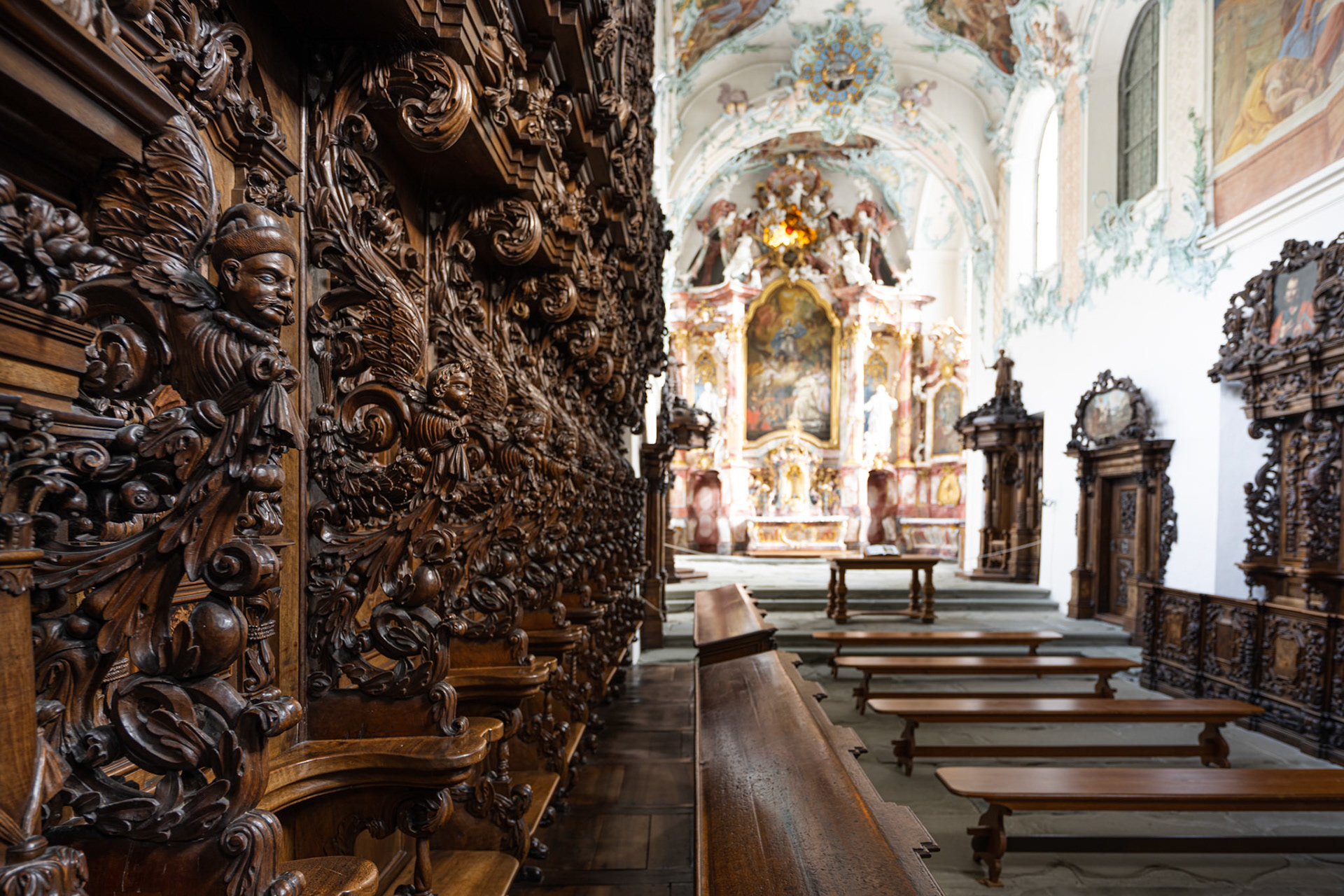
Kartause Ittingen - church
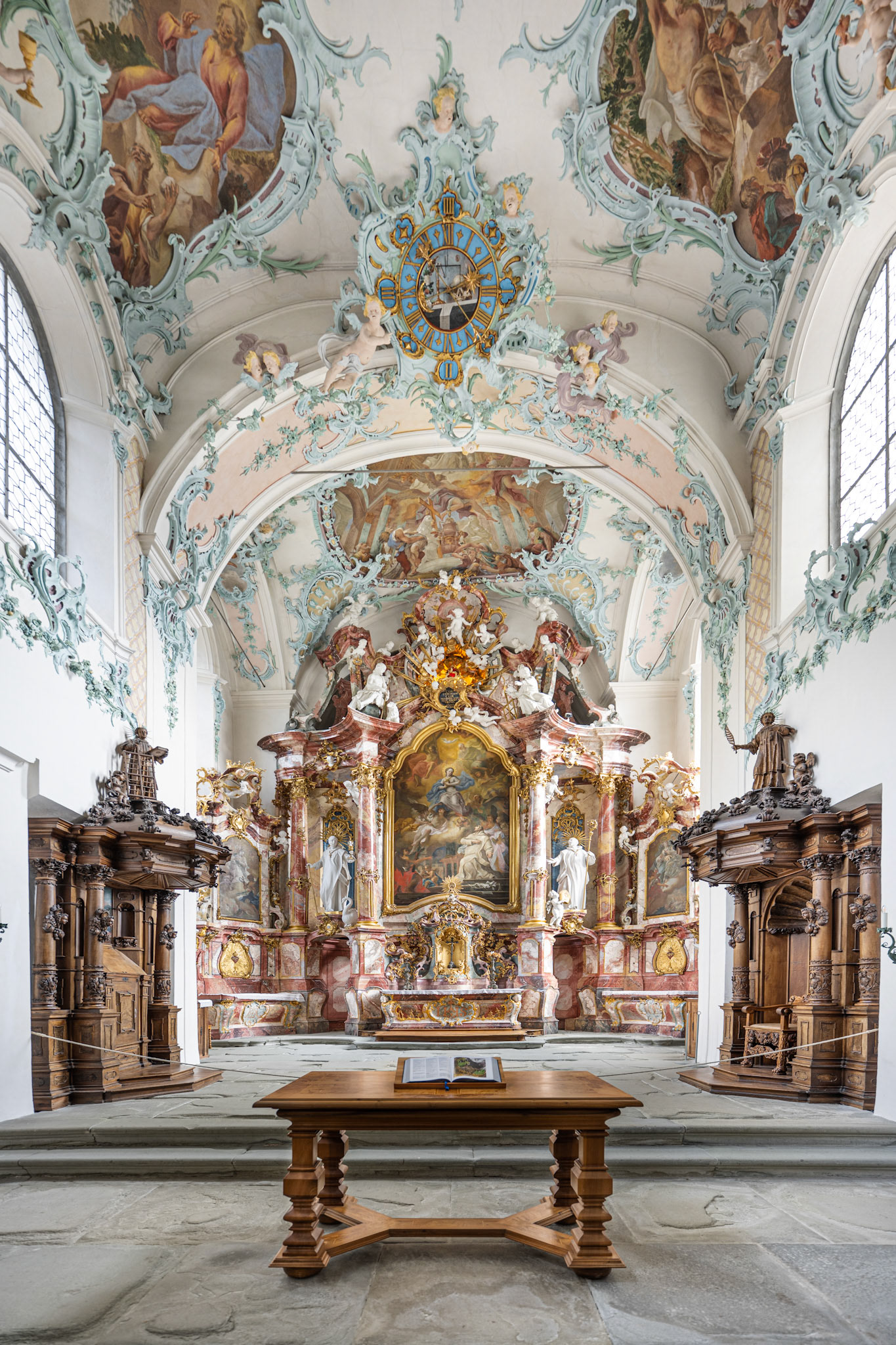
Kartause Ittingen - church
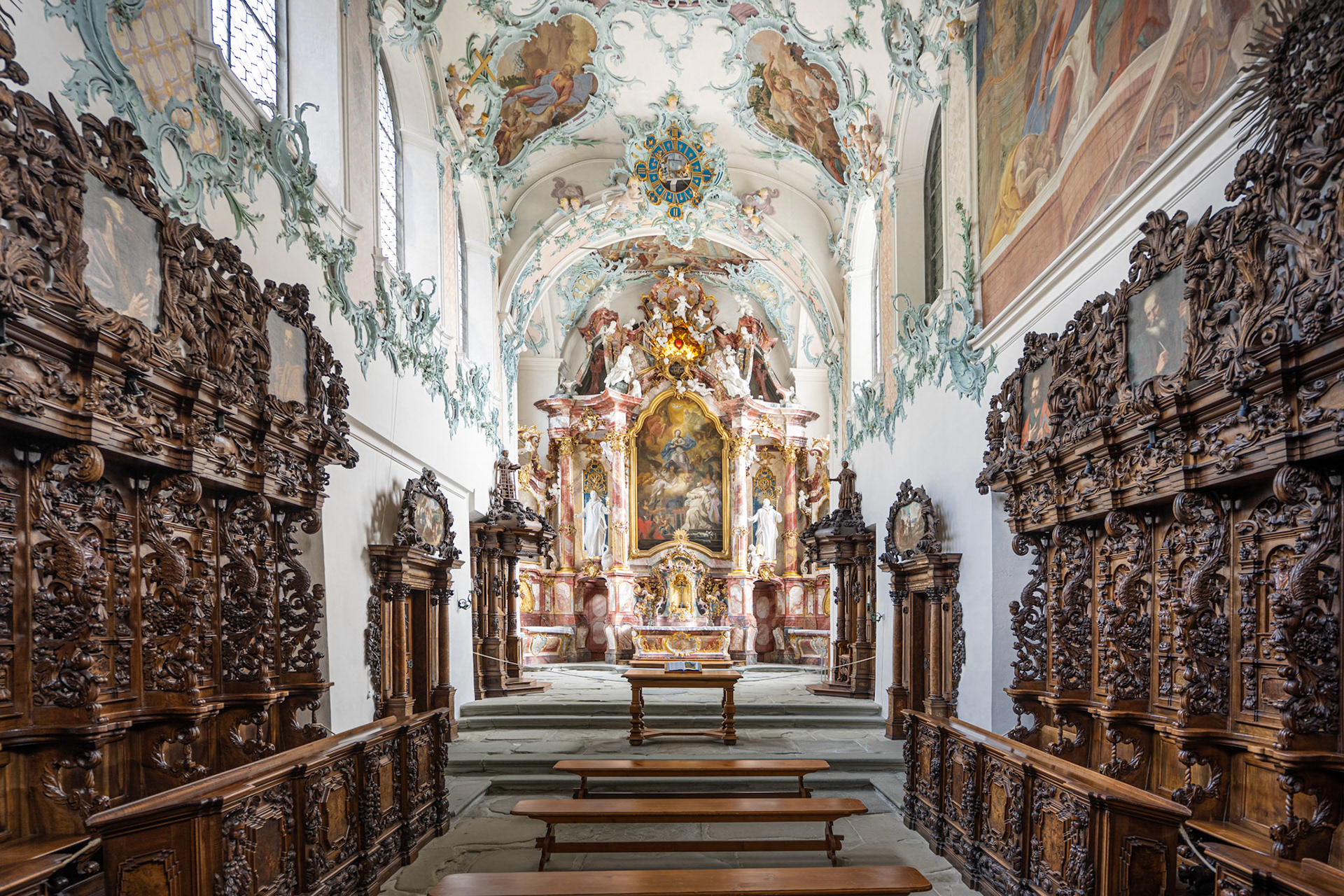
Kartause Ittingen - church
Between 1763 and 1767, the church received the current rococo decoration by a group of artists from southern Germany. The carvings are by Matthias Faller and the stucco marble altars were created by Johann Georg Gigl, who had just finished his work at the Stiftskirche St. Gallus und Otmar and the Stiftsbibliothek St. Gallen. The main theme of the frescoes by Franz Ludwig Hermann is Saint Bruno of Cologne, the founder of the Carthusian order.
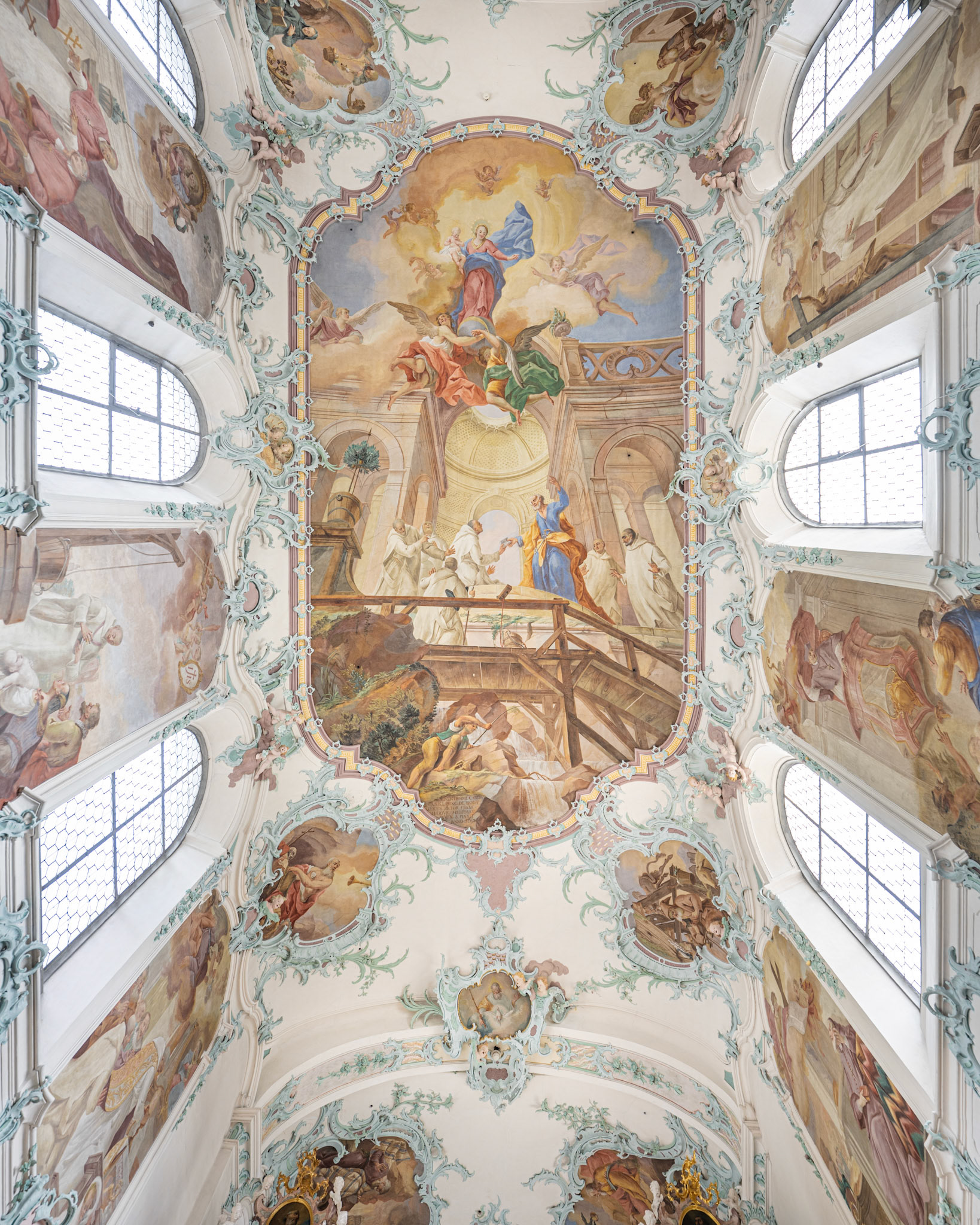
Kartause Ittingen - church ceiling
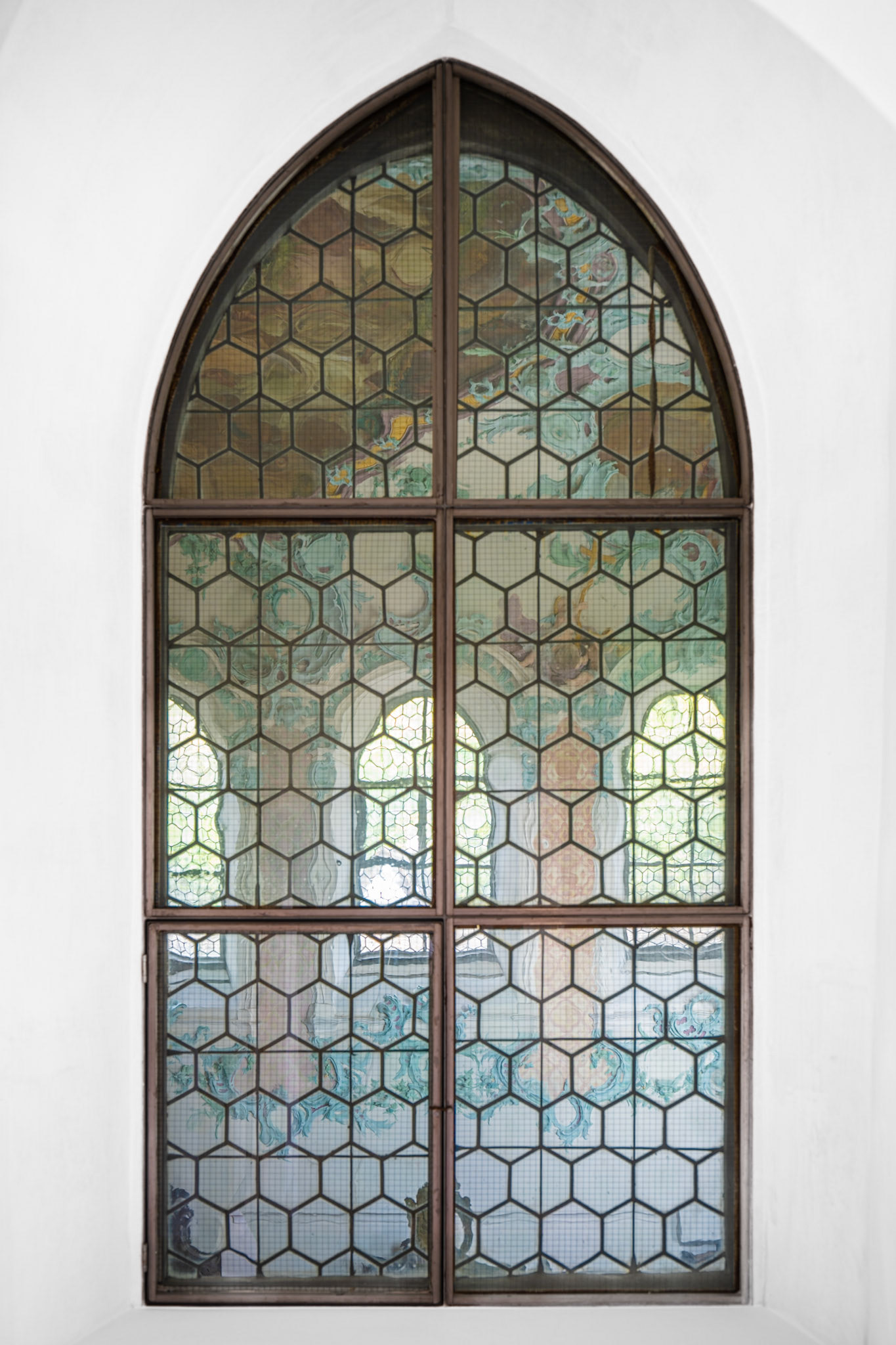
Kartause Ittingen - church window

Meeting between Bruno and Count Roger in La Torre - Franz Ludwig Hermann
Several other rooms can be visited, showing the day to day work and life of the monks.

Kartause Ittingen
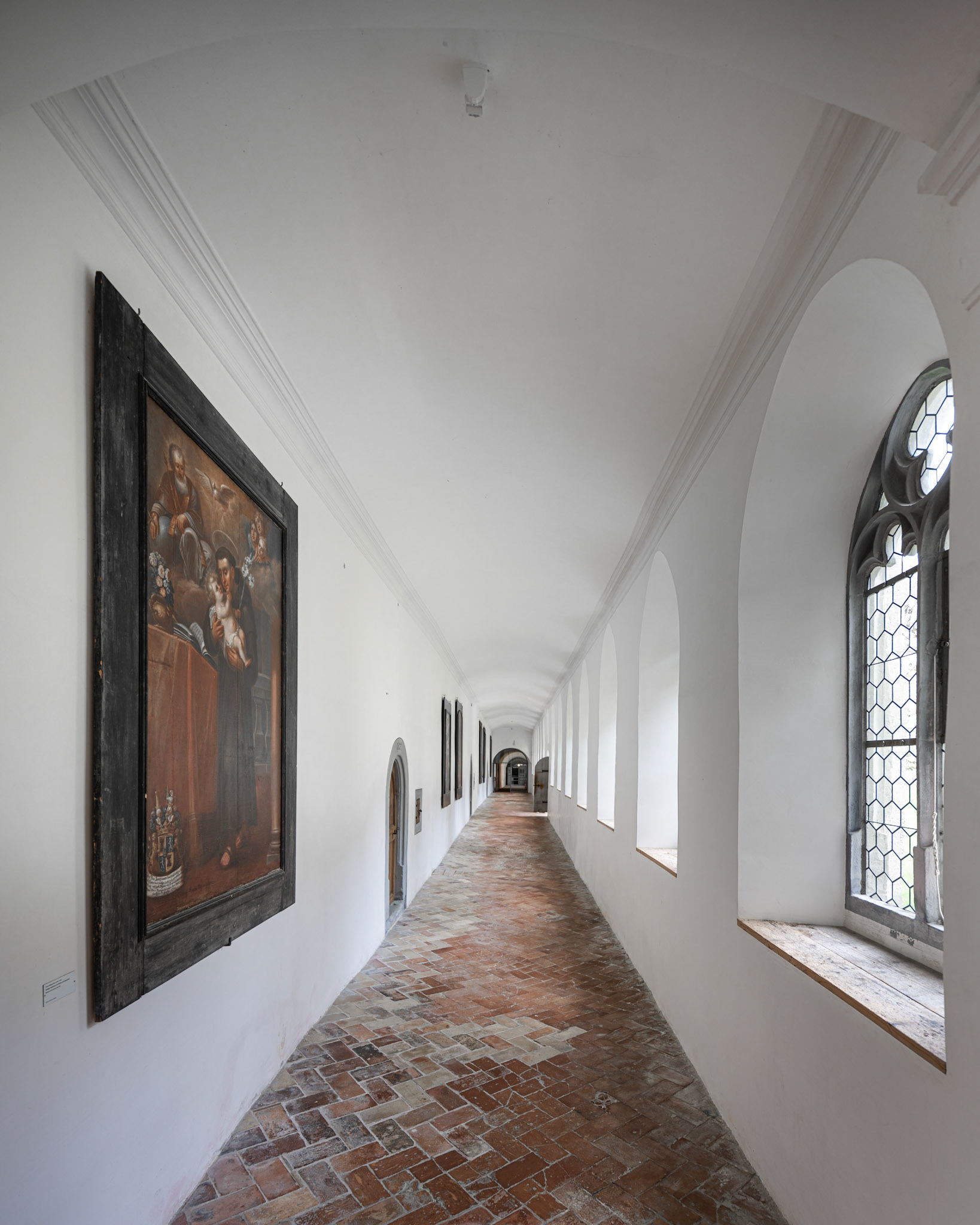
Kartause Ittingen - corridor
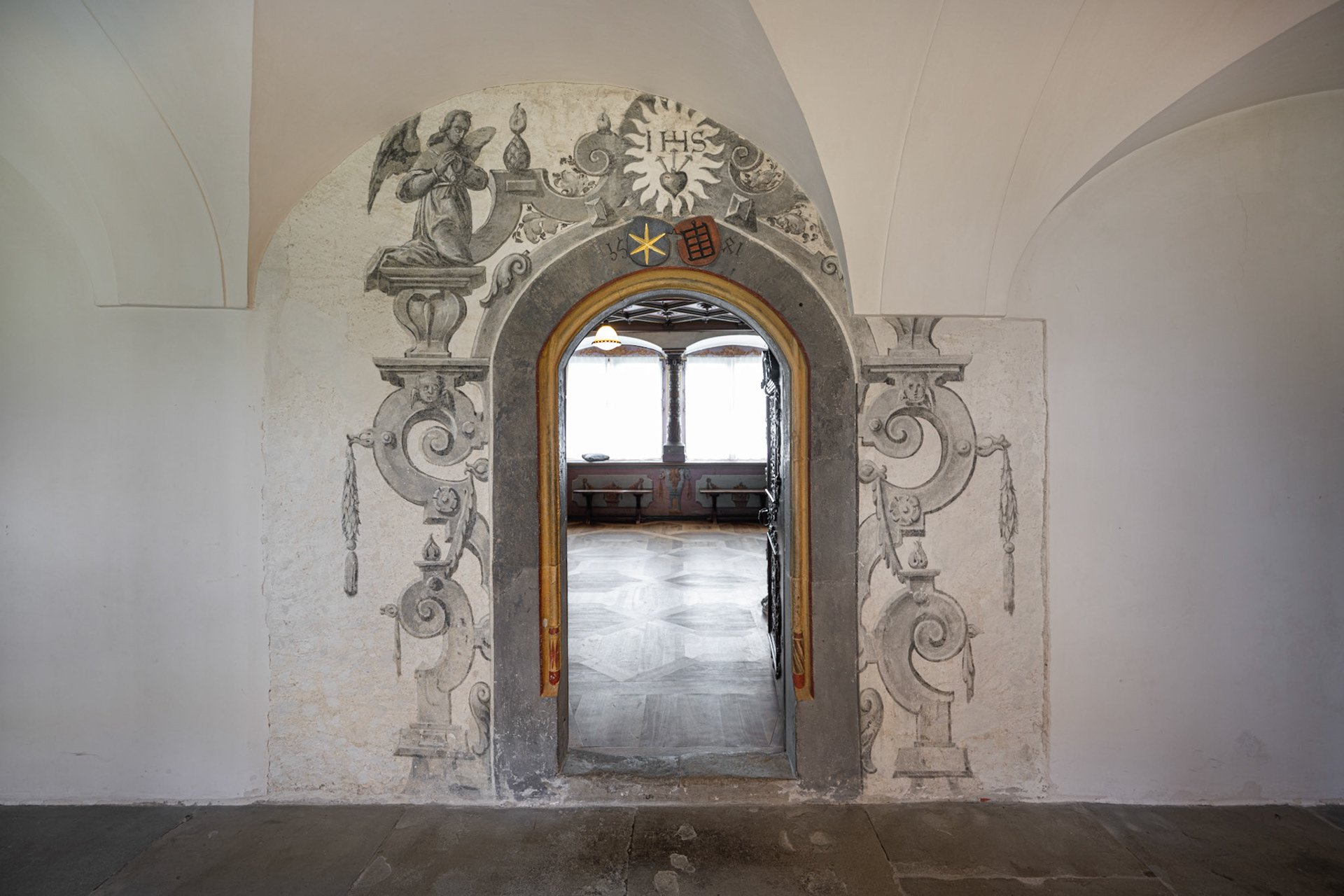
Kartause Ittingen
In contrast to other religious orders, the Carthusians did not eat their daily meals together in the refectory, but individually in the cells. They gathered in the refectory only for the Sunday lunch. The richly decorated ceiling dates from 1673. The paintings are by Johannes Asper and the medallions in the wall paneling showing hermits were added in the 18th century.
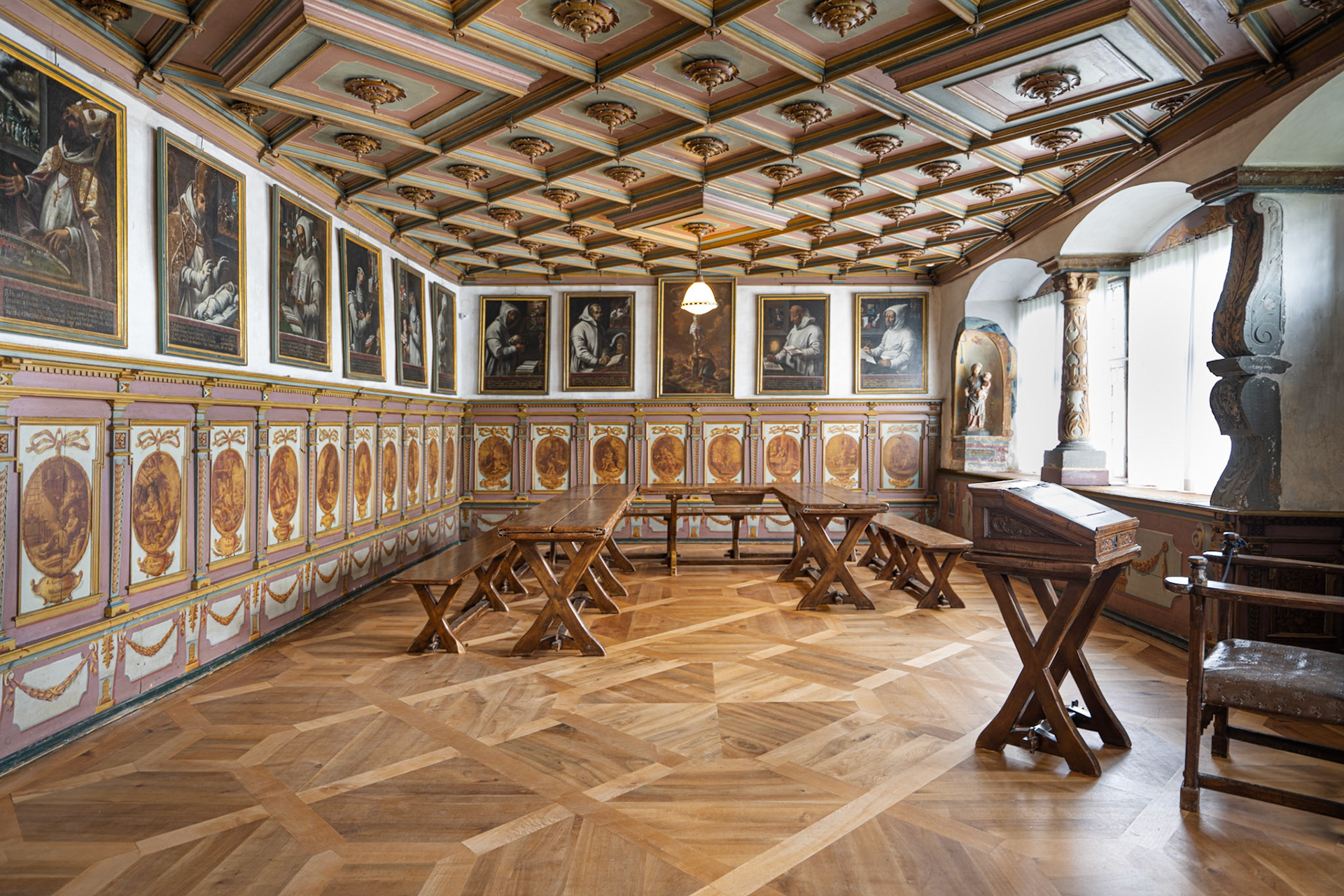
Kartause Ittingen - refectory
In 1848 the monastery was dissolved. In 1867, it was bought by the Fehr family which ran the Kartause Ittingen as a model farm until 1977. The monastery complex was essentially preserved during this time with the Fehr family living in the rooms that had formerly served the prior.

Kartause Ittingen - Fehr family dining room
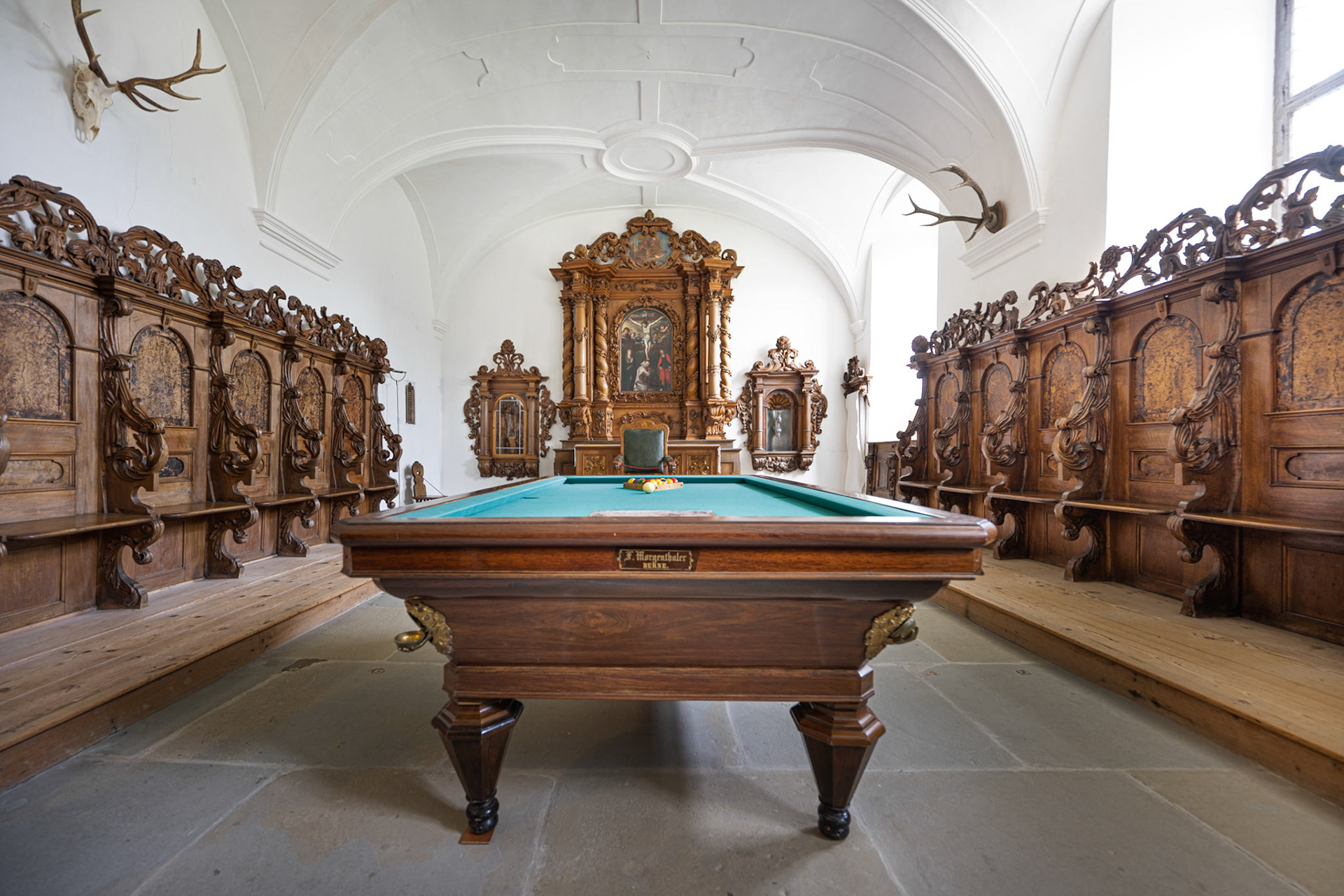
Kartause Ittingen - pool table
In 1880, a loggia with terrace and covered seating area was added in front of the south wing.
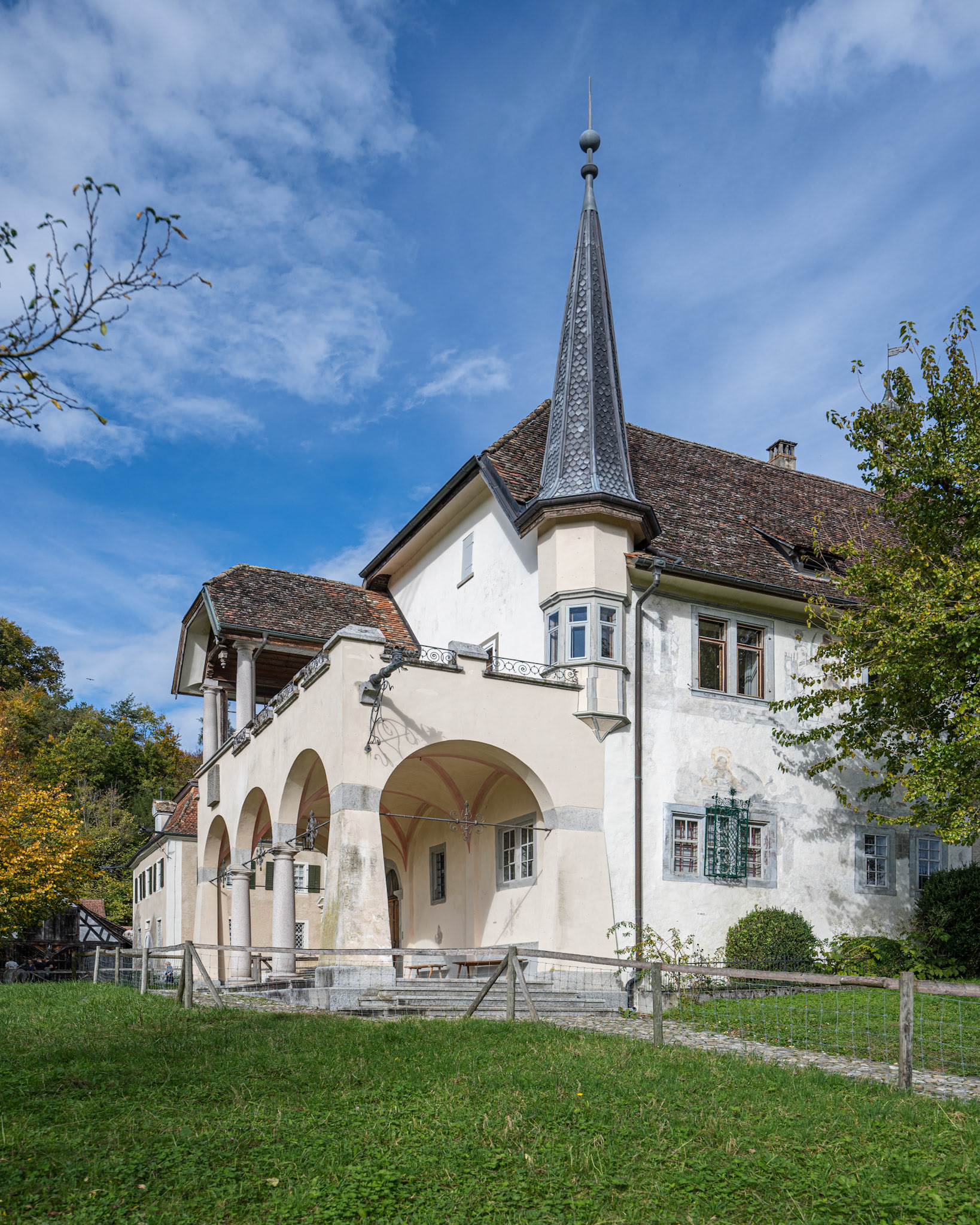
Kartause Ittingen - loggia
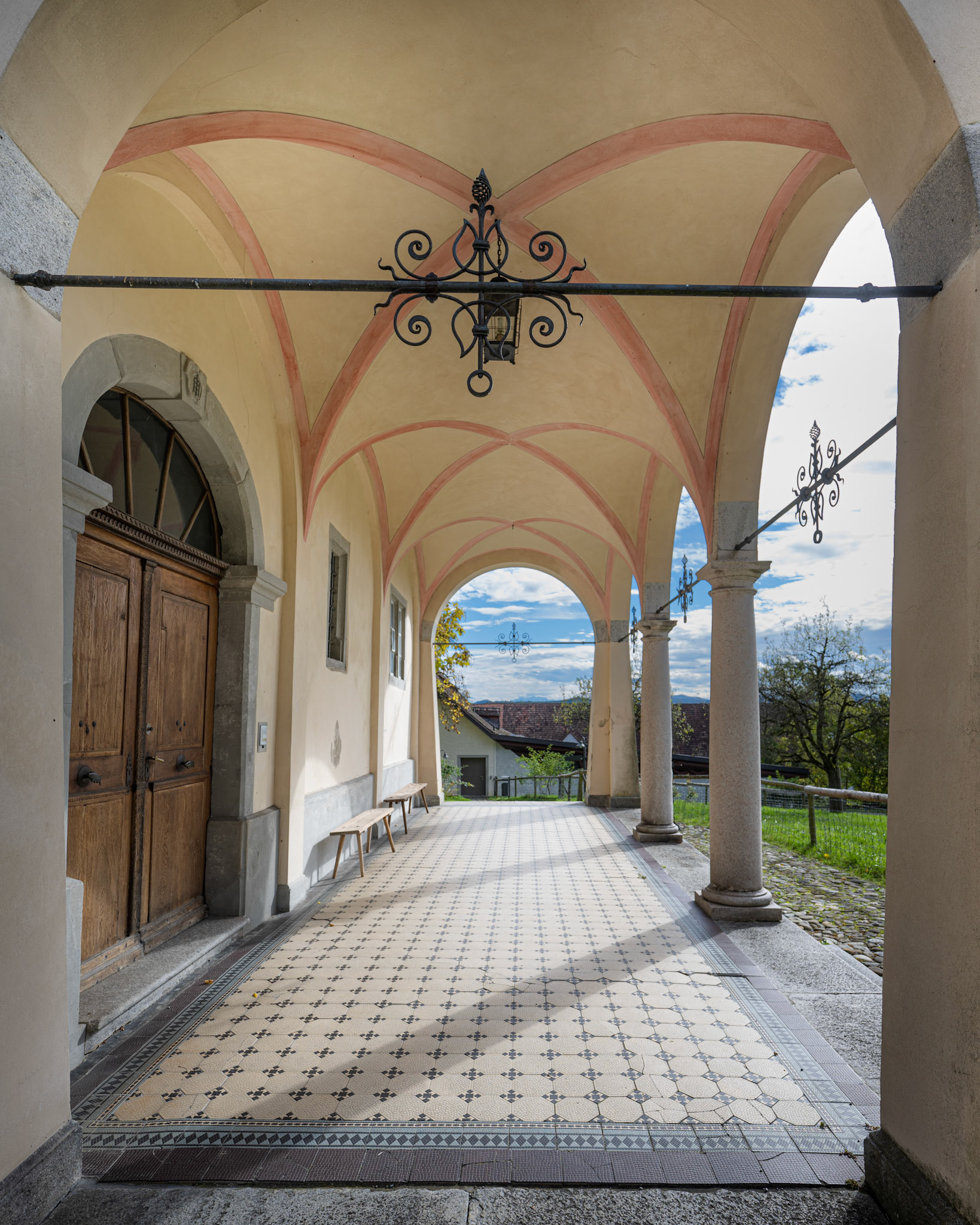
Kartause Ittingen - loggia
In 1977 Kartause Ittingen was sold to the newly founded Ittingen Charterhouse Foundation and extensively restored.